
When the South Korean company Samsung first introduced its phablet, emphasizing its position, and size, between a phone and a tablet, the original Galaxy Note was a product of mass success.
When the world is expecting a bigger phone, the Note models occupy the slot where they reign the market. The series of success by the Note models is making Samsung releasing a new version every year. The Galaxy Note 4 is marking the return of the influence of the original Note that people are expecting.
The Galaxy Note 4 is the successor of the Note 3. Built with more features than its highend smartphone, thanks to its S-Pen stylus and larger screen, the Note 4 a minor upgrade to the Note 3. The Note 4 is more of an evolution, rather than a revolution.
Updated with a modest design, the device still can't hide its fresh looks. Coming in the same color as the Note 3: the Note 4 takes things in its predecessor to a new level with its new shape, better materials and better "leather" effect on the rear.
The device features a 5.7" 2560×1440 Quad HD (QHD) WQ HD Super AMOLED display that is protected by a damage-resistant Gorilla Glass 4. With a pixel density of 515 pixels-per-inch, the Note 4 comes in two variants: a 2.7 GHz quad-core Snapdragon 805 chipset with Adreno 420 GPU, and a Samsung’s ARMv8-A Exynos 7 Octa SoC with two clusters of four cores; four Cortex-A57 cores at 1.9 GHz, and four Cortex-A53 cores at 1.3 GHz. The device has 4G, LTE/LTE-A & Hybrid 4G-LTE Networks and HSPA+.
Powered by Mali-T760 Exynos chipset for GPU, the Note 4 that is equipped with 3 GB of LPDDR3 RAM and 32GB of internal memory. has a new aluminum frame design. Its design quality is an upgrade, but it lacks the IP67 certification (water and dust resistance), which is present in Samsung's Galaxy S 5 smartphone.
The Note 4 features a USB 2.0 charging port instead of USB 3.0 for a new feature called Fast Charge, which Samsung claims can charge the device from 0-50 percent in about 30 minutes and from 0-100 percent in less than 100 minutes. Beside common sensors, the Note 4 comes with a UV sensor and heart-rate monitor.
Factory shipped with Android KitKat version 4.4.4 (version first introduced in September 2013) with TouchWiz interface, the Note 4 is nonetheless similar to the original Note in terms of features and functions. But it packs a significant upgrade with features such as:a new multitasking interface, expanded S-Pen functions that is incorporated into the design, and gestures and refreshed menus and icons.
As a highend device, the Note 4 comes with a back-facing 16 MP autofocus camera with Smart OIS (Optical Image Stabilization + software image stabilization) and 4K video recording. The front-facing camera is a 3.7 MP camera with an f1.9 aperture.
For U.S. selected carriers, the Note 4 with Snapdragon chipset variants can be plugged into the Samsung Gear VR headset, (Samsung partnership with Oculus VR).
As mobile devices grow larger and packs more processing power, battery life is always a debatable topic. To accommodate the larger screen the Note 4 is shipped with a larger power pack than the previous Note 3. With the Ultra Power Saver mode Samsung has brought over from the Galaxy S5, the Note 4 can save more power by shutting down Wi-Fi, stopping most background apps and turning the screen black and white.
This in turn can save about a day of standby time from 10 percent battery.

The Note series are aimed for corporate people and business-minded individuals. That desire is what makes Samsung sees Apple, which its iPhones has taken a large chunk out of BlackBerry's market share. But to those people, security is priority, and Android is always seen as lacking behind iOS in term of security.
To help keep its users' data secure, there are several features that they can use. Samsung's own Knox allows users to keep work and personal apps apart. There’s also the standard Android feature that encrypts data so it won't be readable.
The Note 4 also boasts a fingerprint scanner, as Samsung's attempt in using biometrics security for protecting its mobile device. But in this feature, the Note 4 is considerably behind Apple's TouchID that is more sensitive and less frustrating.
With a heart-rate monitor, blood oxygen saturation monitor and even a UV radiation sensor built in, Samsung is making the S Health revised in the Note 4. Despite the measurements are debatable and not accurate enough to be much of a use to medical professionals, these sensors with their features do give a insight on the users' well being in global.
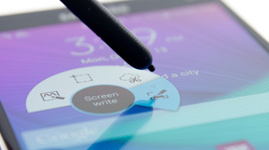
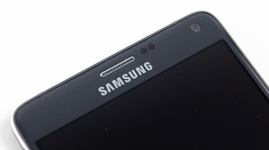
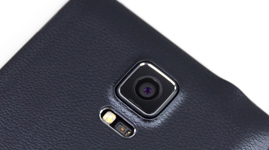
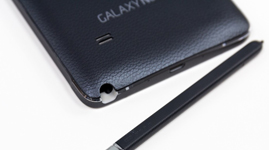

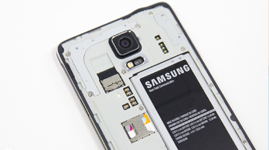
Conclusion
The phablet industry, is where Samsung can expect to win. Many people have mocked Samsung when it first introduced the original Note. But as tech develops and the demand for better screen rises, the is no replacement for screen size.
Samsung's main competitor, Apple is also entering the market with bigger and bigger phones by each release, as it realizes that multimedia experience getting more into consideration. Samsung that has opted for larger screens, much earlier than Apple, is surely in the correct path with better advantage.
Samsung's Galaxy Note 4 has the premium look and feel of a flagship smartphone. It's a powerhouse with a 2K screen, a versatile S-Pen, a variety of health monitoring apps and a 4K video camera. Nothing is perfect, but the Note 4 is certainly comes close.
And as the larger phablets have become a real segment, for most people, Samsung's Note models are the first that comes in mind.